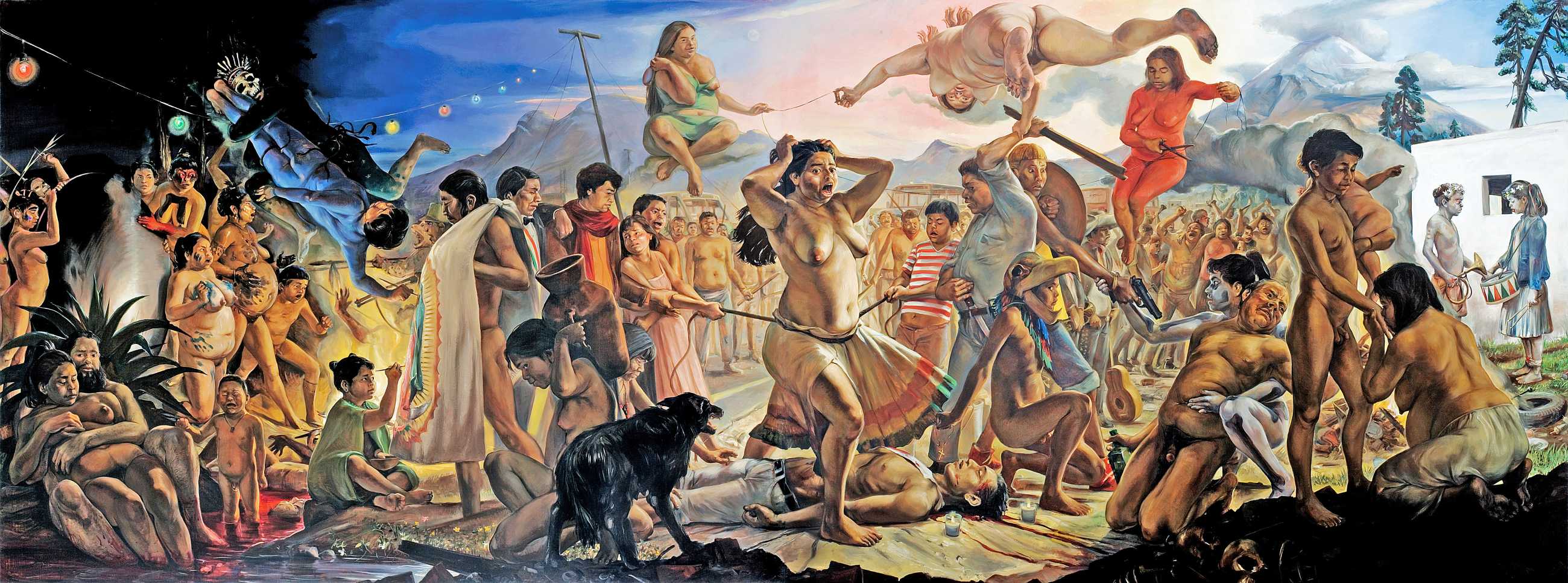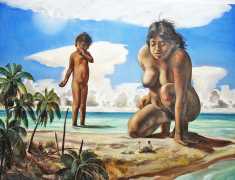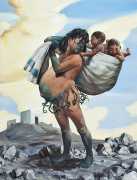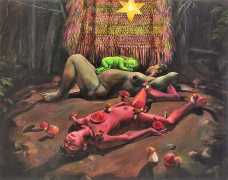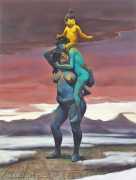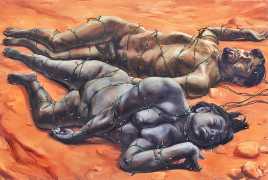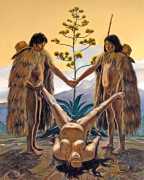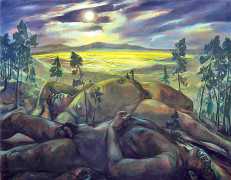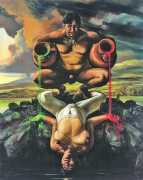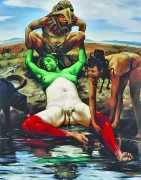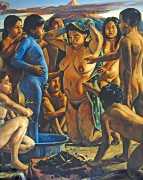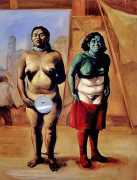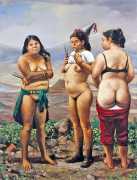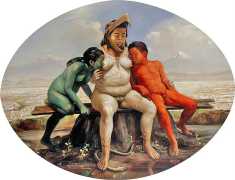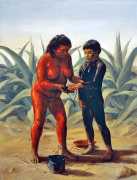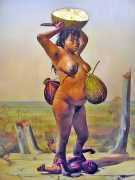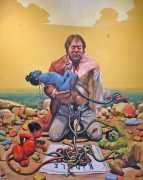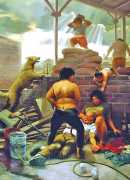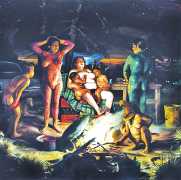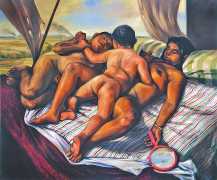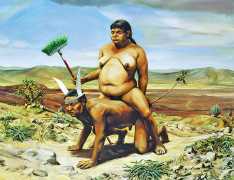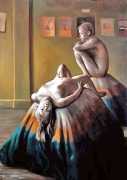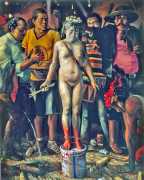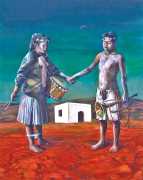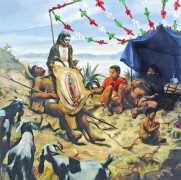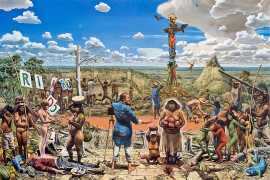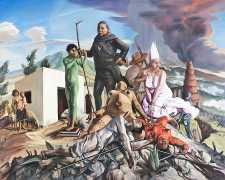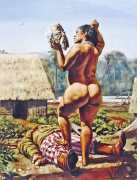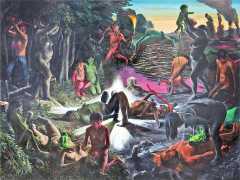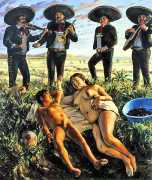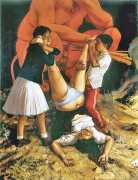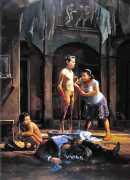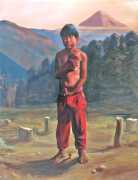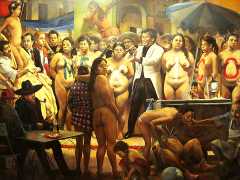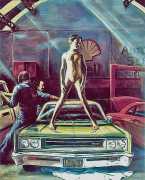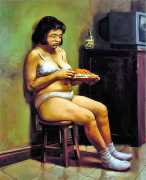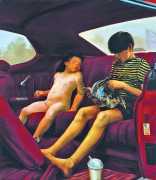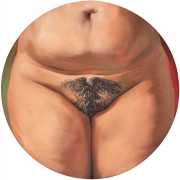While critics extol his daring and originality, Daniel Lezama makes some gallery owners squeamish and collectors nervous. His typically large-scale works are imposing in their size and complexity, startling in their frank depictions of frequently naked, mainly working-class Mexicans, including children, engaged in activities that are simultaneously violent and sordid, touching and tender. Like fever dreams, Lezama’s neo-baroque paintings pull together seemingly unrelated elements. Chiaroscuro lighting and other old master influences dignify tragi-comic tableaux of inebriated peasants and Indian prostitutes. His paintings address many of the most fundamental aspects of Mexican identity and history, hence the title of this section – True History. Or at least Daniel Lezama’s interpretation of his country¹s past.
A large solo retrospective in 2008 at the Museum of Mexico City, a couple of blocks from the capital’s famous La Zócalo, cemented Lezama’s reputation for many. Its centrepiece was an immense painting entitled La Madre Pródiga (The Prodigal Mother), incorporating almost every aspect of Mexican history, emphasising the role of women in the development of the country. Stylistically and thematically, Lezama’s art straddles several eras, making some observers regard him as a backward-looking figurative painter, others as a contemporary iconoclast. In truth, he is a thoroughly modern anti-modernist, or as Erick Castillo, curator of La Madre Pródiga described him, ‘a traditionalist heretic working for the dark legacy of the Mexican unconsciousness. His art is both very rational and deeply symbolic,’ explained Castillo. ‘While many people might consider Daniel a traditionalist painter, the fact is that he is a true painter mexicanista.’
Lezama has been criticised by some Mexicans who don’t like seeing their country depicted in what they regard as a harsh critical light. Others, however, have been left speechless, such as a critic for the Mexico City daily newspaper El Universal, who wrote of La Madre Pródiga that ‘It seduced me, and it terrorised me. It left me feeling almost incapable of writing about his remarkable work.’
